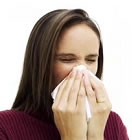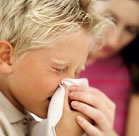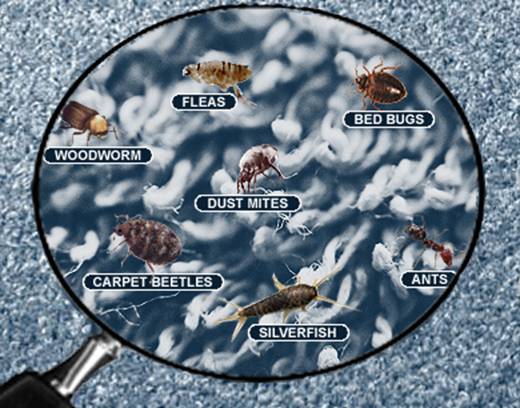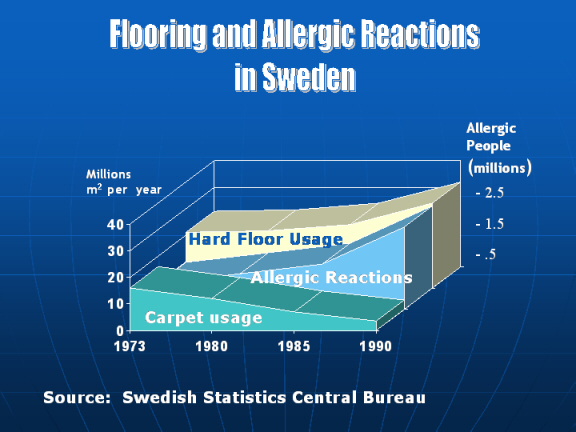Nichols Inc.
Call 925-803-7641
Reduce Allergies, Carpets and Allergies
Reduce Allergies - Tips
The following are some tips for reducing indoor allergens in your home and specifically, in your carpeting - helping you to keep your "home sweet home" a healthy one for you and your family:

- Vacuum, vacuum, vacuum. This cannot be stressed enough. You should vacuum at least twice a week, more often if you have pets. Vacuuming helps rid your carpeting of dust, dust mite feces, animal hair and dander, human hair and dead skin, mold spores, dead bugs and abrasive - carpet life shortening - sand and soil. Make sure that you use a vacuum cleaner that has a high efficiency HEPA filtering system. If you need suggestions for choosing a new vacuum, call us.
- Dont sweep your hard surface flooring. Sweeping redistributes allergens to the air. Vacuuming your floors, followed by a damp mop, will help keep the air your family breathes cleaner.
- Adopt a no shoes policy in your home. This will keep outdoor pollutants from entering the home.
- If you have forced air heating and cooling systems, leave the fan switched to on at all times. This will continually circulate the air in your home through the air filters, removing airborne particulates. Make sure that you change your filters monthly. Consider using high-efficiency HEPA air filters.

Follow these simple tips, and not only will you have a healthier home, but your carpeting will last longer also.
What's In Your Carpet?

A carpet and allergies are like best friends. Your carpet soaks up anything that touches it and won't release it until it is thoroughly washed. You wouldn't wear a T-shirt for a year without washing it. Carpet is fibrous material just like your clothes. The link between your carpet and allergies is indisputable -- but it is made better or worse depending on how old the carpet is, how thick it is and its quality (some poor carpets shed more easily). Of course, if you clean it more, it should contain less allergens also!


What is the best floor covering for allergy suffers?

Carpet is the largest filter in a home or building. Carpet filters soils, gases, spills and other pollutants. Most soils encountered are of microscopic size and are invisible to the naked eye. The smaller the particle size the easier it becomes airborne. Particles of one micron size can stay airborne for more than eight hours. These particles are respirable and can trigger allergic reactions. Carpet traps and holds onto these particles until they can be safely removed during vacuuming. In 1975 Sweden claimed that textile floor coverings were causing allergic reactions and subsequently carpet's share of the floor covering market shrank from 40 percent to 2 percent in less than 20 years.
Interestingly, a study done in Sweden found that while carpet had steadily decreased, the occurrences of allergic reactions had increased just as steadily. The Swedish people realized their error and carpet is once again a popular floor covering. In fact, in Sweden where health hysteria led to a 77% reduction in carpet use between 1975 and 1990, there was an increase of more than 300% in allergic disease over the same period.
